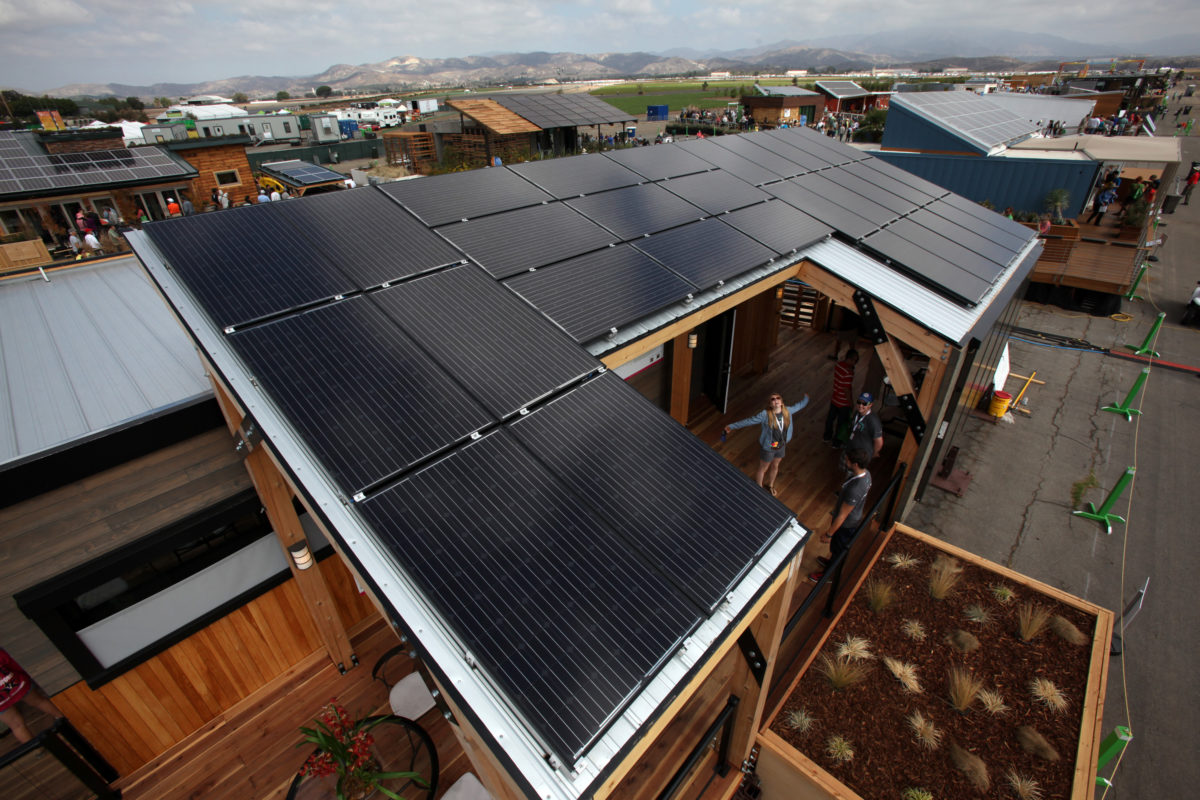Blockchain technology has the potential to significantly shape how electricity produced by distributed generation sources is managed, says EY. It points to LO3 Energy's use of blockchain in New York City as one example of how the technology is already shaking up the energy sector. The company is using blockchain to facilitate the operation of a virtual microgrid that connects residential rooftop PV arrays, through which asset owners can affordably sell electricity to other members of the microgrid.
However, the technology is not without its own issues. The main problem for big energy companies it that “potential blockchain applications are often designed to replace legacy systems and processes,” EY says in its RECAI May 2018 report. Despite this, European grid operator TenneT is already working with storage specialist Sonnen to use blockchain to stabilize the grid.
The technology could also radically change how renewable and distributed energy is traded, EY says, noting its own project with Gasunie to use blockchain to help authenticate green energy certificates. But EY also acknowledges that consumer trust in blockchain still needs to be built. It also points to the “paradox” of using an energy-intensive technology such as blockchain to drive renewables uptake.
“Companies need to begin experimenting with blockchain, to start to understand its potential in their existing business and its potential for new applications,” EY says in its RECAI report. “That experimentation and understanding needs to take place at the highest level of the company. It is not sufficient for the blockchain conversation to be delegated to the IT department.”
At risk
“The renewable energy sector is at risk,” says Ben Warren, EY Global Power & Utilities Corporate Finance Leader. But the focus on costs in the solar and wind sectors is “paying dividends,” he adds, pointing to recent data from Bloomberg New Energy Finance (BNEF) that shows that the benchmark global levelized cost of electricity (LCOE) had dropped by 18% year on year for both solar and onshore wind at the beginning of 2018, to $70/MWh and $55/MWh, respectively.
Yet Warren sees dark clouds on the horizon, noting the troubling possibility that India could apply a tariff of 70% on imports of PV modules, as well as the impact that Washington’s 30% levy on imported solar cells and panels could have on U.S. jobs in the PV sector. And rising interest rates are also threatening to squeeze sources of affordable capital for solar and wind developers. “Financiers are anticipating tougher times for developers looking to fund their projects,” he says.
Popular content
Tough times
The renewables sector has benefited from the steady stream of capital that has been available to fund projects since the financial crisis, partly because quantitative easing measures implemented by central banks throughout the world have provided commercial lenders with abundant liquidity. Low interest rates have also encouraged a range of institutional investors to start looking at energy projects for returns.
“Investors and project finance banks are now prepared to lend earlier in the cycle — and to move out of home markets,” observes Warren. However, now that this era appears to be coming to an end, new approaches to financing may be starting to emerge, He points to Macquarie Capital, which recently predicted that export credit agencies could become key to getting projects off the ground in the years ahead, as they offer guarantees against loans, so banks do no have to hold so much capital when lending to solar and wind projects.
Another change is that the world’s biggest oil and gas producers have started to return to investments in renewables, And unlike in the past, where many such forays into solar and wind were “speculative bets” that were eventually abandoned, these companies now “appear to be here to stay,” as the rise of electric vehicles and the global response to climate change have painted them into a corner.
EY highlights Shell’s recent investment in U.S. solar developer Silicon Ranch, as well as BP’s purchase of a stake in Lightsource Renewable Energy, as examples of this shift. It also points to big plans by France’s Total, Italy’s Eni, and Saudi Aramco, as well as Norway’s Statoil’s decision to rebrand itself as Equinor, as further evidence that the world’s biggest energy groups are more committed to renewables than ever before.
This content is protected by copyright and may not be reused. If you want to cooperate with us and would like to reuse some of our content, please contact: editors@pv-magazine.com.


1 comment
By submitting this form you agree to pv magazine using your data for the purposes of publishing your comment.
Your personal data will only be disclosed or otherwise transmitted to third parties for the purposes of spam filtering or if this is necessary for technical maintenance of the website. Any other transfer to third parties will not take place unless this is justified on the basis of applicable data protection regulations or if pv magazine is legally obliged to do so.
You may revoke this consent at any time with effect for the future, in which case your personal data will be deleted immediately. Otherwise, your data will be deleted if pv magazine has processed your request or the purpose of data storage is fulfilled.
Further information on data privacy can be found in our Data Protection Policy.